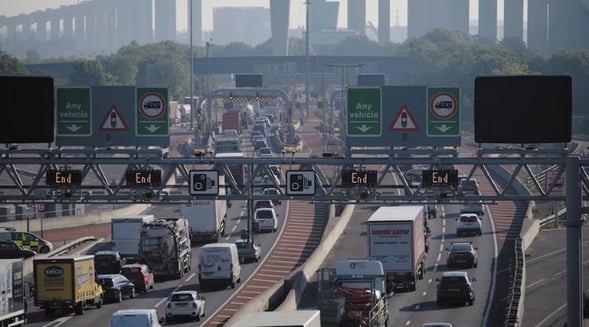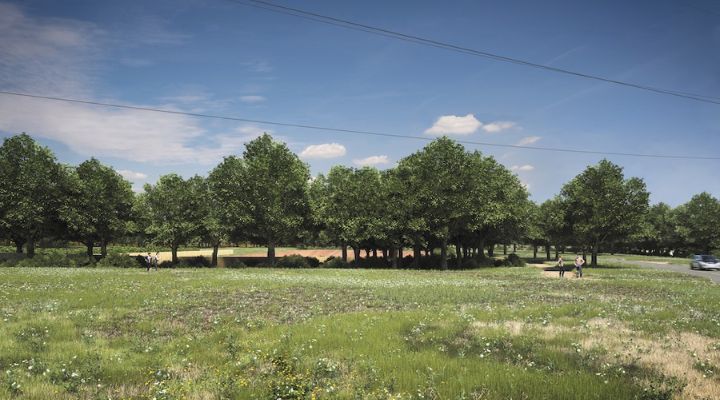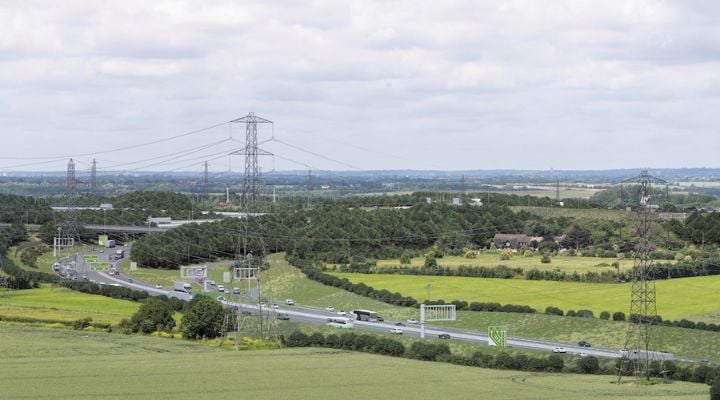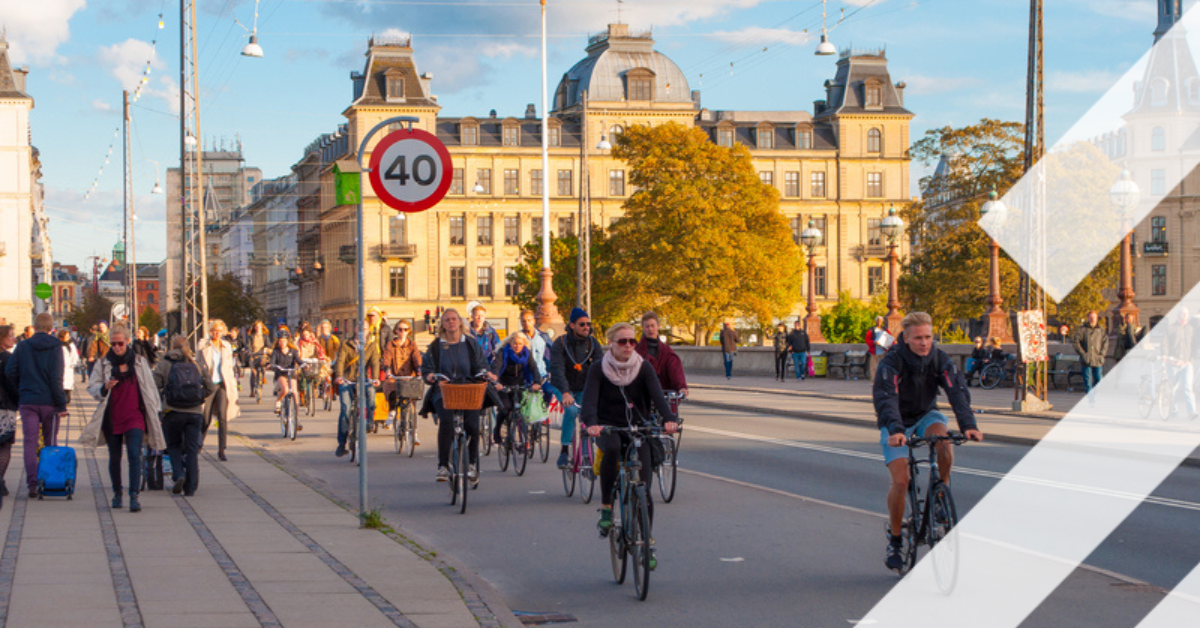If it gets the final go-ahead, the Lower Thames Crossing will be the largest road-building scheme in the UK for 30 years, but that’s not the most significant thing about it – what really sets it apart is the fact that it is pioneering new low-carbon techniques that can inspire other projects right now, as Jack Roper discovers in this extract from Intertraffic World 2024
The Lower Thames Crossing is Britain’s most ambitious road-building scheme in three decades. It will connect Kent and Essex with 14.3 miles of three-lane highway crossing the Thames Estuary in two 2.6-mile (4.2km) tunnels, which will be Britain’s longest and among the widest bored tunnels on earth. It will take six years to build, cost an estimated £8.3 billion (€9.7 billion) and be the greenest road-building project ever seen.
The Lower Thames Crossing is a pathfinder project for the industry. We aim to achieve net zero construction and maintenance emissions by 2040
“The Lower Thames Crossing is a pathfinder project for the industry,” says Lower Thames Crossing sustainability director, Andrew Kidd. “We aim to achieve net zero construction and maintenance emissions by 2040. This £8bn government-funded project has a powerful market signaling effect and will drive commercialisation and scale-up of low-carbon road-building from 2026 to 2030.”
The new road will relieve congestion at Dartford, currently the only Thames road crossing east of London, which consists of two tunnels and a cable-stayed bridge. Designed for 135,000 vehicles per day, Dartford carries 180,000 on peak days and sees 3,000 incidents per year, one of the UK network’s highest rates. Dartford is subject to perpetual delays, which spill onto local roads and requires a 300-strong team to keep traffic moving.

“We have more people managing one mile of road at Dartford than our whole southwest regional network,” says Kidd. “The southbound bridge makes freight susceptible to high winds and we have to escort certain vehicle-types through the older tunnel. The problem for drivers isn’t just the speed of journeys, but their unpredictability. Local journeys, like collecting the kids from school, are continually impacted by problems on the strategic road network.”
Because Dartford is on the shortest route linking Britain’s channel ports to the Midlands and North, 40% of the 50m vehicles crossing annually are goods vehicles. The Lower Thames Crossing will siphon this traffic off to the east and create growth by connecting Kent and Essex.
“Essex and Kent are sizable regional economies that don’t really talk to each other,” says Kidd. “Fewer than 1% of people commute across the river today. By taking 13m journeys away from Dartford, the Lower Thames Crossing will make existing journeys more predictable and enable new and different journeys on a free-flowing 70mph crossing.”
Emissions limits
Lower Thames Crossing is the first UK infrastructure project to commit to legal limits on construction emissions in its development consent order. Its procurement asked tenderers to commit to these limits and demonstrate how they would eliminate emissions. Its contracts incentivise them to continue reducing emissions across the project’s lifetime.
“We don’t have targets, but limits,” Kidd explains. “We have a long construction period with technology quickly evolving. If we set a target now, it risks seeming difficult and putting people off, but by 2030, appearing too easy. Our methodology is to set initial limits, then continue driving emissions downwards.”

Contractually, the project is split into three components: Roads North of the Thames, Tunnels and Kent Roads. Roads North is awarded to Balfour Beatty and Kent Roads to Skanska, with a Tunnels decision shortly expected. Early contractor onboarding maximises opportunities to embed low-carbon technologies and develop local supply-chains.“The successful tenderers all committed to better limits than we asked,” says Kidd. “That delivers a 50% emissions-reduction versus a conventionally-built equivalent scheme at no extra cost to the taxpayer – just as a starting-point.”
We are exploring techniques and solutions such as modular construction to deliver the project with the lowest possible carbon footprint
Balfour Beatty will focus on delivering its tender commitment across four carbon-reduction priority areas of design, plant, steel and concrete and expects to adopt alternative fuels including hydrogen. “With 32 major structures within just 10 miles, the Roads North package presents exciting opportunities to rethink traditional approaches from the outset,” says Balfour Beatty sustainability director, Geri Straine. “We are exploring techniques and solutions such as modular construction to deliver the project with the lowest possible carbon footprint.”
National Highways expects supply-chain engagement and detailed construction-planning to drive emissions down beyond its 50% starting-point, with contractors incentivised to deliver continuous reductions. Balfour Beatty will empower supply-chain partners with tools and guidance and require them to formally quantify their carbon impacts. Fundamentally, savings are achievable in three ways.
How CO2 savings are achieved
“One way is to build less of something and thus use less materials,” says Kidd. “Digital design and off-site construction can help deliver really smart engineering and design. Secondly, we can reduce the carbon-intensity of materials, which means attacking steel, concrete and diesel.” A third important pillar is that National Highways also aims to eliminate diesel machinery from its construction sites within the project’s timescale. Construction equipment consumes far more power than a passenger car and its duties are much more demanding, making it harder to wean off fossil fuels. Essentially, there are three approaches to this…
“One is battery-electric, for smaller, mobile equipment,” says Kidd. “Cable-electric will be more efficient for cranes or piling rigs, whose work is often stationary. They may track across site on a battery, then plug in to work. Finally, for excavators over 20 tonnes and articulated haulers, we expect the solution to be hydrogen.”

Remarkably, National Highways has launched a procurement for 6,000 tonnes of hydrogen to supply its delivery partners and combine demand across all three Lower Thames contracts. In doing so, it aims to create a hydrogen economy across the Thames Estuary and a hydrogen capability across UK construction.
“It’s part of what it takes to be a pathfinder,” says Kidd. “Going to market early gives hydrogen suppliers time to get in shape, relative to construction. The major equipment manufacturers all have hydrogen programmes. Procuring our own hydrogen takes a major reason not to adopt off the table.”
Steel’s carbon-intensity depends entirely on how it is manufactured and UK producers are already transitioning from coal-burning blast furnaces to electric arc furnaces. Because the end-product is exactly the same, the only variable to consider is the relative carbon-intensity of steel production. Concrete presents an altogether more complex picture.
“Concrete gets very technical very quickly,” says Kidd. “There are millions of recipes, but they all contain cement, which produces about 8% of global emissions. Both the energy consumed and the chemistry itself contribute to emissions from cement production. Fundamentally, we can either reduce the carbon-intensity of cement, or displace it with other materials, which enhance the concrete’s binding properties.”
Eventually, Kidd foresees the application of carbon capture and storage technology to cement production, though this would inevitably cost more than simply releasing CO2 up a chimney. In the nearer term, ground granulated blast-furnace slag (GGBS) or calcined clays may offer feasible cement replacements in lower-carbon concretes. Kidd believes cement and concrete producers are awake to challenges they must solve to continue doing business in the coming decades. After all, road-building’s green future will not stop at UK shores.
“Globally, Europe is leading the way,” says Kidd. “We’ve looked at how the Netherlands has focused on getting operational emissions to zero. On embodied carbon, Oslo in Norway has forged ahead with bullish requirements for the construction sector. They have numerous sites using only zero-emissions equipment. Certainly, that provided some inspiration for us.”
The importance of protecting nature
Biodiversity is a major focus. The new roads will be 80% underground or behind embankments while building tunnels instead of a bridge will safeguard protected wetlands. Lower Thames Crossing will plant a million trees, create seven green bridges, two public parks, 22 ponds, 12 miles of hedgerow and a 95-hectare community woodland. Overall, it will create three times more woodland than it removes.
We’re connecting existing wildlife habitats and providing new ones. We’re creating almost 40 miles of footpaths, cycle-paths and bridleways – three miles of new pathway for every mile of road
“We’re connecting existing wildlife habitats and providing new ones,” says Kidd. “We’re creating almost 40 miles of footpaths, cycle-paths and bridleways – three miles of new pathway for every mile of road. Alongside strategic infrastructure, we think holistically about the legacy we leave in the landscape.”

Design was shaped by the most extensive consultation exercise ever undertaken for a UK road scheme, eliciting over 90,000 responses. This resulted in moving tunnel entrances further from the river, lowering the level of roads, redesigning junctions, changing most of the route from two to three lanes in both directions and widening tunnels accordingly. But still, the Lower Thames Crossing awaits approval for work to commence in 2026.
A development consent order application was submitted in 2022 with an examination process with the Planning Inspectorate concluding at the end of 2023. “Based on their report, we expect a decision from the Secretary of State next summer,” says Kidd. “Beyond that, we will just need the green light from government to get started.’
The Lower Thames Crossing will nearly double Thames-crossing road capacity east of London. Based on standardised regional traffic models, National Highways believes it will divert 13 million journeys from Dartford, especially goods vehicles headed north from channel ports. It may reduce emissions from stop-start driving in congestion, though Kidd is cautious on this point.

“Generally, improving traffic flows increases vehicle efficiency and yields a carbon reduction,” he says. “But the Lower Thames Crossing may open in 2032, by which time the vehicle fleet will look quite different. Over the asset’s 60-year accounting or 100-year operational lifespan, the vast majority of journeys will be net-zero journeys.”
The scheme is not without detractors, who claim more roads simply create more traffic, or that the UK would be better-served moving freight by rail, or using northern ports for northern destinations. But National Highways’ remit is limited to making roads as sustainable as possible in supporting the journeys people need to make.
“Even doubling rail network capacity would barely move the dial relative to freight movements by road,” says Kidd. “Extreme congestion at Dartford really makes the case on its own. From an economic or a driving perspective, we haven’t modelled any scenario where you regret building the Lower Thames Crossing.”
Read the full version of this article in
Intertraffic World 2024









